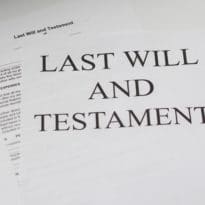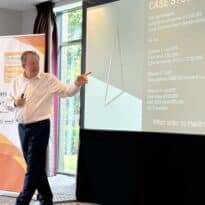What happens when a client exceeds their annual allowance and how do they pay the tax charge. Brian Radbone, Technical Counsel at Transact, explains.
When pension input in a tax year exceeds an individual’s annual allowance, which is currently anything from the standard £60,000 to £10,000 where the full effects of tapering or the Money Purchase Annual Allowance (MPAA) applies (and may be greater where unused annual allowance from previous tax years is being ‘mopped up’), an annual allowance tax charge must be paid.
Any charge due must be detailed in the ‘Pension savings tax charges’ section of the individual’s self-assessment return for the tax year in which the excess input arose. The charge can either be paid by the individual via self-assessment or it can be paid by a pension scheme on the individual’s behalf.
If the standard £60,000 annual allowance has been exceeded and the tax charge across all schemes is £2,000 or more, the scheme can be requested to pay the charge to HMRC under mandatory ‘Scheme Pays’ provisions. The pension benefits in the scheme will be reduced accordingly – an immediate reduction in the fund value in the case of a defined contribution scheme or a reduction in the pension payable from retirement in the case of a defined benefit scheme.
If the charge is less than £2,000 and/or a non standard Annual Allowance applies because of tapering or the MPAA, a scheme may still pay the charge but it will be on a voluntary Scheme Pays basis. Where a scheme does not offer the voluntary basis then, for those where the mandatory basis does not apply, the charge will have to be paid via self-assessment.
Prescribed information must be provided to the scheme by the individual in a notice. The information required includes:
- Member’s full name, address and date of birth
- The tax year for which the charge applies
- The amount of the tax charge the scheme should pay
- Confirmation that the tax charge has been calculated correctly and that they understand that benefits will be reduced
Under mandatory ‘Scheme Pays’ the notice must be provided to the scheme by 31 July after the end of the tax year following the tax year in which the charge arose, so for a charge that arose in the 24/25 tax year the deadline will be 31stJuly 2026. The scheme must pay the charge by 14th February 2027. If the individual is looking to take all of the benefits or will reach age 75 in the year they wish to use ‘Scheme Pays’ then the notice must be provided in good time for the scheme to make the payment before the benefits are taken or the individual reaches age 75.
Under voluntary ‘Scheme Pays’ the normal self-assessment deadline applies, so the charge must be paid by 31stJanuary following the end of the tax year in which the charge arose. Typically this means that the scheme will require receipt of the notice before the previous 31st December.
The charge does not have to be applied to the scheme to which the excess input was made. For example, the charge may arise in a defined benefit scheme, but this could be deducted from a personal pension of the individual rather than reducing their benefit entitlement in the defined benefit scheme.
As the new Chancellor considers how to ‘plug’ the £20bn plus public finance deficit, a reduction in the annual allowance may be included in October’s Budget. We may therefore see more people becoming subject to the annual allowance tax charge and thus an increase in the use of ‘Scheme pays’ to pay the charge.
Main image: Brian presenting at the 2024 Technical Insight seminars





























